This article may be of some use: Determine page number in SSRS
Determine page number in SSRS
This method takes advantage of SQL Server’s new ranking functions and can be used in your SQL Reports to determine the page number in the body of a report and also possibly act upon that information to hide/display columns.
Use this method if:
- You have a preset limit of how many records display on a page
- You have grouping and each group shows on its own page
- You can accurately calculate the number of records on each page
Solution in article uses the Ranking Functions in SQL, well worth a look to see if it is applicable.
So I mentioned there were 3 scenarios where this could work for you. I’ll give an example on how to do each and let your creativity do the rest. This will server as our sample sales table:
name sales_amount group_name Scenario #1 Scenario #2 Scenario#3
A 10 A1 1 1 1
B 20 A1 1 1 1
C 30 A1 2 1 1
D 30 A2 2 2 1
E 40 A3 3 3 2
F 40 A3 3 3 2
G 50 A4 4 4 2
H 60 A5 4 5 2
Scenario #1:
You have a preset # records to be places on each page:
Here’s what your SQL Query would look like:
DECLARE @rows_per_page INT
SET @rows_per_page = 2
SELECT
employee.name
,page = (Row_Number() OVER ( ORDER BY employee.sales_amount ) / @rows_per_page)
FROM
employee
In SSRS you can then create a parent group in your tablix (SSRS 2008) and set the option to break “Between each instance of a group”. (Page Breaks tab in SSRS 2008)
Scenario #2:
You have grouping and each group shows on its own page
SELECT
employee.name
,page = Dense_Rank() OVER ( ORDER BY employee.group_name )
FROM
employee
On your report in SSRS, on the group properties for the table/matrix/tablix set the option to break “Between each instance of a group”. (Page Breaks tab in SSRS 2008)
Scenario #3:
You can accurately calculate the number of records on each page
If you can accurately calculate the number of records on each page, it becomes an easy task to use a similar methods as in #1. In the example, the number was 4 records per page.
